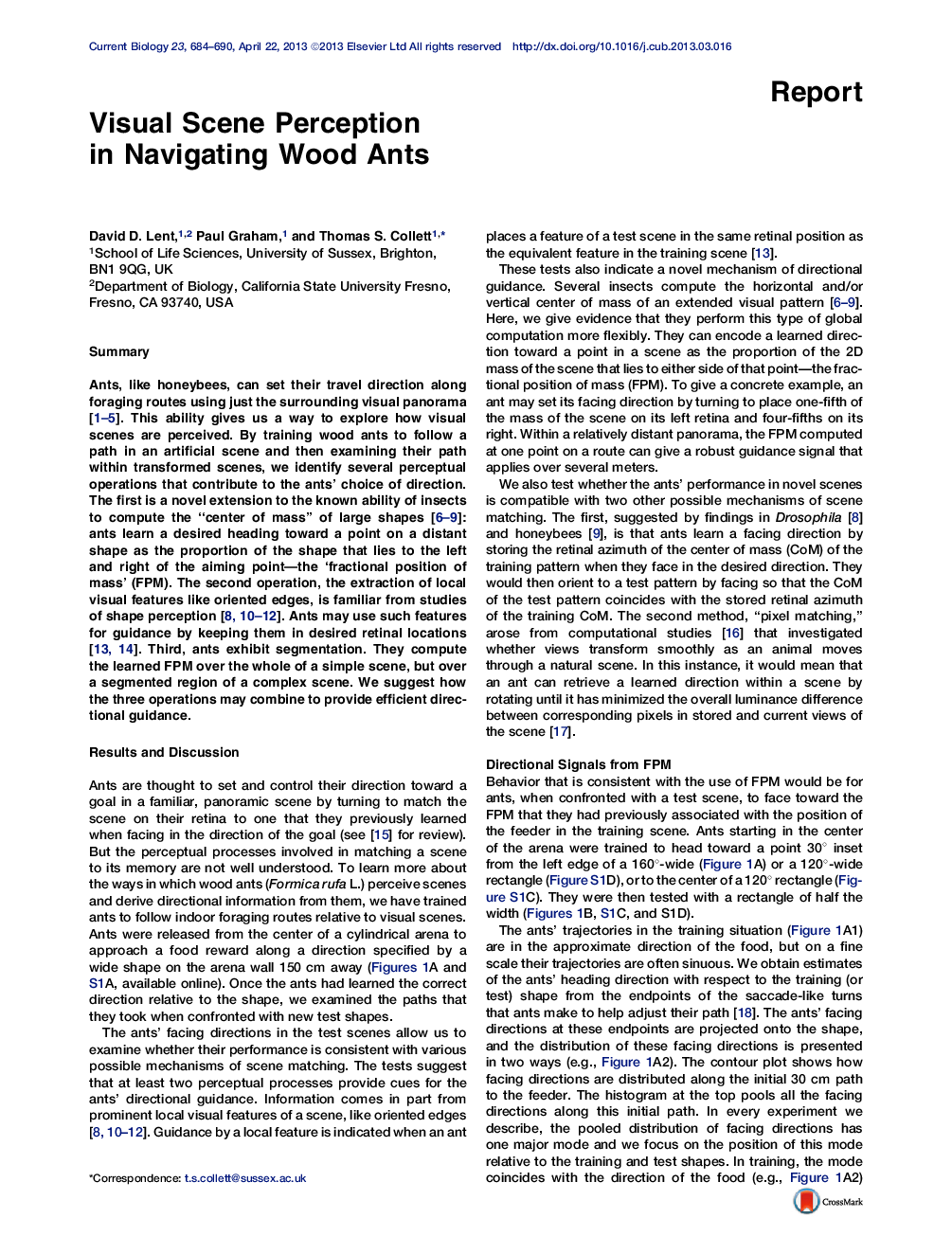| کد مقاله | کد نشریه | سال انتشار | مقاله انگلیسی | نسخه تمام متن |
|---|---|---|---|---|
| 2043017 | 1073315 | 2013 | 7 صفحه PDF | دانلود رایگان |

SummaryAnts, like honeybees, can set their travel direction along foraging routes using just the surrounding visual panorama [1, 2, 3, 4 and 5]. This ability gives us a way to explore how visual scenes are perceived. By training wood ants to follow a path in an artificial scene and then examining their path within transformed scenes, we identify several perceptual operations that contribute to the ants’ choice of direction. The first is a novel extension to the known ability of insects to compute the “center of mass” of large shapes [6, 7, 8 and 9]: ants learn a desired heading toward a point on a distant shape as the proportion of the shape that lies to the left and right of the aiming point—the ‘fractional position of mass’ (FPM). The second operation, the extraction of local visual features like oriented edges, is familiar from studies of shape perception [8, 10, 11 and 12]. Ants may use such features for guidance by keeping them in desired retinal locations [13 and 14]. Third, ants exhibit segmentation. They compute the learned FPM over the whole of a simple scene, but over a segmented region of a complex scene. We suggest how the three operations may combine to provide efficient directional guidance.
► Global and local visual features of a scene help guide familiar routes
► Learned direction is the ratio of a scene segment lying left and right of the heading
► This learned fractional position of mass can set direction in unfamiliar test
► Ants can segment complex shapes and compute the FPM over a segmented region
Journal: - Volume 23, Issue 8, 22 April 2013, Pages 684–690